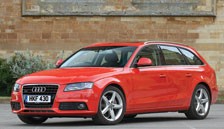When buying or selecting a new car, it is imperative to remember that you are also buying it for several other people.
It’s not just your driver who will appreciate the car – it has also got to be an attractive option to used buyers in three or four years’ time.
And the bad news is, there’s no formula for finding the perfect used car that will sell for top money, first time out at disposal.
Mike Hind, communications manager at CAP, said: “Used buyers want the most features, the best metallic paint finishes and the best balance of performance and economy they can achieve, for as little cost as possible.
“Research and commonsense goes a long way towards ensuring their needs are met.”
There are a series of rules which, if followed, will allow you to maximise residual values at defleet time.
The first thing to consider is the model and derivative. Choosing a large car with a large petrol engine will ensure colossal depreciation – and while this may make the model look affordable on the used market, the running costs will deter many second-hand buyers.
As an example, think of models such executive and luxury saloons powered by large petrol engines, and also SUVs – in these sectors diesel power is an absolute must.
Colour is also key, and it is worth considering carefully as trends change.
Hind added: “What looks great new under the showroom spotlights does not necessarily maintain its appeal with three years of road use.”
It is worth exercising caution when drivers are ticking boxes on the options list.
Hind added: “A car with desirable features will sell more quickly, and if the market is depressed this may spell the difference between a quick disposal and a costly delay.”
'The right choice can make or break a car'
Choosing the most desirable optional extras is more important on executive cars than for any other market segment.
Residual values for models such as the Audi A6, BMW 5 Series, Jaguar XF and Mercedes-Benz E-Class depend massively on being in the right specification.
According to Richard Crosthwaite, car editor at Glass’s, some key options will make a significant contribution to boosting residuals.
He said: “Leather is a must, and all cars in this segment are expected to have it. A one-year-old Mercedes-Benz E280 CDI (pictured below) with a cloth interior will be worth up to £1,200 less than a leather-equipped example, and will be much harder to sell on.”
He advises avoiding flat (non-metallic) colours, except black. He says poor colour choice can reduce a car’s value by thousands of pounds.
Satellite navigation has become an essential feature, adding between £1,000 to £2,000 to a car’s value, according to Glass’s data.
Alloy wheel upgrades can also make a big difference. According to HPI’s valuations expert, Alan Senior: “The right choice of wheel can make or break the look of a car. This can equate to a £500 difference in value.”
Crosthwaite agrees: “Choosing to upgrade can have a big impact.”
Lower cost options, such as Bluetooth connectivity and heated or electric seats, can help make a car easier to sell on, too.
De-fleeting strategy
Once the vehicle specification has been finalised, it is essential to look at your de-fleet strategy.
Theo Kortland, business development director at GRS, said: “There are some simple steps to take to ensure you’re de-fleeting in the most cost-effective manner.”
Firstly, understand your current remarketing performance (number of days from defleet to cash in the bank, or average percentage of CAP achieved), and how much it costs you to defleet each vehicle, including transport, storage, refurbishment and fees.
Secondly, work out your strategy, be it in-house, outsourced or a mixture. Also look at the channels, whether auction or direct sale.
Thirdly, analyse management information to see how to maximise your return on investment in terms of the age, model and mileage of the vehicles being defleeted.
For more information, go to www.grs.co.uk














Login to comment
Comments
No comments have been made yet.